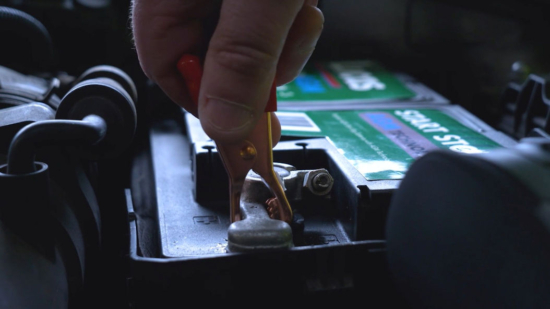Battery testing means extra profits, says Ecobat
 According to Ecobat, 27% of vehicles entering independent workshops either need their batteries recharged or reconditioned (Photo: Ecobat)
According to Ecobat, 27% of vehicles entering independent workshops either need their batteries recharged or reconditioned (Photo: Ecobat)
At this time of year, as the nights draw in and the temperatures drop, many drivers find their battery is faltering, or possibly completely flat.
However, a difficult question that’s been raised on many occasions, is that without drivers experiencing starting problems, how do they know where their car’s battery is in its lifecycle? The answer, which is a subject that has also been raised on many occasions, is to have the battery tested, but realistically, motorists are not going to do this proactively, so it’s down to workshops to put a battery testing regime into practice. This policy is even more important as the seasons change and the increasing likelihood of some early morning frost or a prolonged cold snap.
Sadly however, despite it taking just a couple of minutes, workshops rarely do a battery test, which is a wasted opportunity because as Ecobat Battery, the UK’s largest battery distributor, has found, statistically, 27 per cent of the vehicles that enter the independent workshop either need their batteries recharged or reconditioned, and a further 11 per cent need a replacement.
What all this means is that almost 40 per cent of the vehicles they service daily has a battery issue, and so it is little wonder that 40 per cent of roadside breakdowns are due to battery failure, which is business lost to independents and gained by the national breakdown services.
So, to encourage and assist workshops to introduce a battery testing culture, Ecobat Battery can, through its motor factor customers, provide them with point-of-sale support material that includes battery testing report cards, counter displays, A4 leaflets and A2 posters, which are available in a choice of Lucas, Exide, Varta or Numax branding.
As well as stating why they shouldn’t be overlooked by workshops, it’s worth exploring why batteries discharge, particularly in cold weather and ultimately, why they fail.
Even when disconnected, a typical lead acid SLI (starter/lights/ignition) battery will self-discharge at the rate of 0.1-volt per month, which means that a fully charged battery at 12.7-volts will be discharged to the point that it would struggle to start an engine (11.8-volts), in just nine months!
This natural discharge process is obviously exaggerated when the battery is connected because it is the only source of power to the vehicle’s electrical system when the engine isn’t running, so its numerous electronic devices – clock, alarm, remote locking mechanism etc. – all constantly draw power, further increasing the rate at which it discharges.
Opening and closing the vehicle without driving anywhere puts more pressure on the battery as it can draw as much as 50-amps to do so, and should there be a parasitic drain because of a problem somewhere in the vehicle’s electrical system, the issue is further exacerbated.
When these real-life scenarios are combined with cold weather however, the pressure on the battery moves to an entirely new level because, even without these ongoing issues, when the temperature drops to freezing, the battery can lose up to 35 per cent of its power, which is why cold weather shows up battery problems so intently.
When it comes to why most batteries reach their end of life it is generally due to a process called sulphation, which is a chemical reaction that takes place in the electrolyte within the battery when the voltage drops to 12.4 or below, which causes lead sulphate crystals to build up on the lead battery plates. This reduces the battery’s capacity and cranking potential and signals the beginning of its demise.
These combined effects along with reduced car usage means that whatever the weather, the future looks bright for the replacement battery sector.



Comments